
The transportation sector is at the cusp of significant disruption, with new technologies, services, and business models coming on the scene. It has fundamentally upended the way we look at travel, both as a means of transport and as a holistic mobility experience. Despite the challenges, the sector’s traditional public versus private bifurcated operational structure is now converging, giving way to a new ecosystem that focuses on riders and delivers a seamless multimodal travel experience.
To examine these trends and Hitachi’s role, we invited experts who have worked in the transportation domain and helped shape it over time: Professor Daniel (Dan) Sperling, Founding Director of the Institute of Transportation Studies at UC Davis, Jian Sun from Hitachi Rail STS – Americas, Dean Bushey from Global Social Innovation Business-Americas, Hitachi, Ltd. and Yushi Akiyama from Corporate Strategy and Business Development at Hitachi America, Ltd. The roundtable discussion was hosted and moderated by Ravigopal (Ravi) Vennelakanti and Malarvizhi (Malar) Sankaranarayanasamy from Hitachi America R&D.
(Published 10 May, 2021)
Ravi
Dan, in your book Three Revolutions, you present a vision for transportation in 2040. Can you describe the scenarios? How could technology and policy converge to build an equitable transit ecosystem and democratize mobility?
Dan
Our transportation system has evolved into a car monoculture. It has provided huge value and benefit to many people and for the economy. But it's also created a system that marginalizes a lot of people. It's hugely expensive and resource intensive. In the United States, only 2% of passenger travel is by public transportation. That 2% doesn’t come anywhere near providing the kind of mobility and accessibility that you would expect from modern affluent society.
The great news is that a stream of innovations and technologies provides the promise of something better. The key is automation. The question becomes whether these automated vehicles are going to be owned by individuals or used for mobility services. There is a “dream” scenario in which automated and connected vehicles are operated by mobility service entities. If they're personally owned, that is the “nightmare” scenario, with much more vehicle and energy use - further entrenching the car monoculture. In this nightmare scenario, vehicles are more expensive and more exclusive, and undermine support for mass transit and public transportation. The inequities and high costs we see now will be exaggerated.
The reason policy is so important is that if we just let the market system and behaviors proceed, we probably will head toward this future of individually owned automated vehicles. That is not in the public interest and probably not in the interest of the economy. What we can do is create mobility services that provide relatively cheap transportation and more accessibility to more people. The other benefits flow from there. We would use less space, road infrastructure and parking. We would use urban space better, more efficiently.
Ravi
Jian, what are the game changers for public transit and rail with the emergence of new technologies and demographic shifts due to urbanization?
Jian
Since 2013, there has been an increase in alternative modes of transportation that compete with mass transportation for ridership. People are taking more Uber rides, instead of the public bus or subway.
Public transit in the United States is endangered, for various reasons, some related to technology, some to competition from transportation network companies or TNCs, some to micro-mobility, and so forth.
Another trend is toward being complementary across modes of transportation rather than competitive. For example, the on-demand service from a TNC platform can be the solution for the first and last mile of a trip, delivering door-to-door service. The public transit system serves the high-density passenger corridor in the middle of that equation, and the rest of the trip is fulfilled by a ride-sharing service.
A third trend is paratransit and on-demand service that uses another platform’s available services. For this trend, there are initiatives to open up and share operational data, and even to consider building an open architecture so that third-party suppliers can tap into the data to enhance the customer experience.
In these trends, we can see opportunities for Hitachi Rail to supply solutions for integrating services and optimizing assets and resources as public transportation systems evolve.
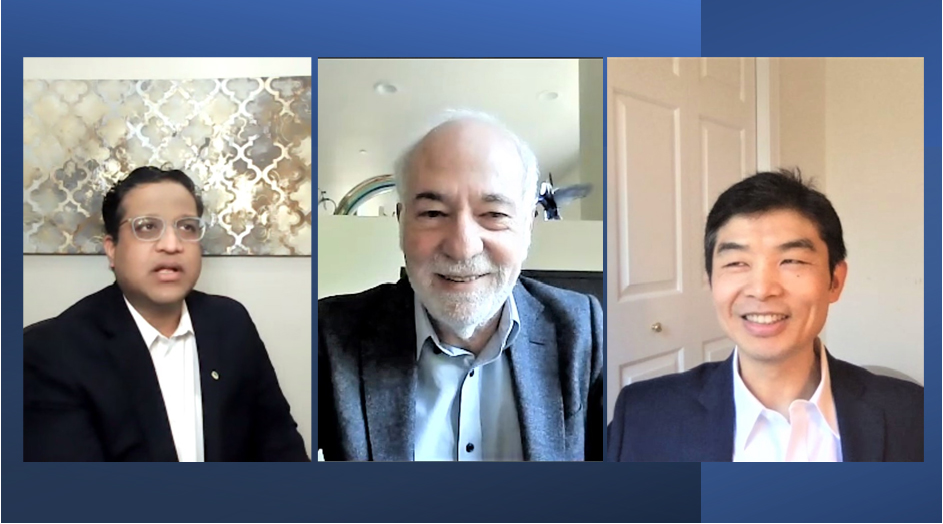
Malar
We have a huge number of stakeholders in a mobility ecosystem, and the goals of the private sector are not necessarily the same as the public transit systems. This puts policy at the center of the discussion. What kind of multi-organizational structure is needed to address this imbalance in interests?
Dan
Policy is at the core of this better future. I am fixated on what exact policy instruments we need to make progress. The United States is probably more difficult than elsewhere because the transit operators’ capacity is weak. In Europe, transit operators have much more capacity, and you can think of them as being full partners in a lot of the services, products and technologies that we're talking about. This better future is all about partnerships and cooperation.
In the United States, most transit operators are focused on keeping things running. It’s very operational. Their innovativeness and organizational capacities have atrophied. This atrophy has been a policy decision, maybe not explicitly, but we've supported individual ownership of vehicles and allowed public transportation funding to dwindle over time. We must get transit operators working with TNCs and micro-mobility providers, including micro-transit options, which is basically Uber on steroids. Creating effective partnerships is hard, though. For a company like Hitachi, you already provide a lot of equipment to transit operators, but it means taking it to another level of being a true partner and developing these services with them—more so as automation creates new business models.
Malar
Yushi, how do we translate these expectations into reality?
Yushi
The dynamics of how many passengers are riding which transit system at what time can be derived from the data we can see using today’s technology. We can use this data to design transit systems that provide appropriate service, for users while ensuring optimal operations in terms of energy usage and maintenance, and so forth.
One key technology is the method we use to acquire ridership data to accurately predict how people are using transit systems. A lot of this can be done through the ticketing mechanisms we have in place and other means of detection (like people flow analytics).
Another technology that works on the back end is how we integrate multiple platforms that run these systems. Traditionally, transit agencies around the world have developed and operated their own systems in silos, but by leveraging the relationships we have with these transit agencies, Hitachi can connect these systems on the back end and make it seem like one seamless platform for the passenger.
Malar
Jian, what role can digital technologies play to enable this transition in traditional industries like railways and have an impact on society’s mobility ecosystem in general?
Jian
Hitachi has the capacity to join the discussion for improving outcomes in a lot of forums and we support and promote public transportation. We recognize the benefits of public transportation in terms of reduced environmental impacts from mass transit. We believe it’s essential to maintain major transit corridors with funding process from the federal government down to local agencies. Regarding technology, Hitachi is an IT and an OT company, offering the best of both worlds. This means we are focused on core rail operation and control, but we're expanding to adjacent areas, such as making our service easy to access, and easy to maintain. An entire segment of the Hitachi Social Innovation Forum 2021- Americas which will be held from 25-27 May, will focus on Mobility, for example.
We also realize that new technology is a culture changer. We are driving a different kind of conversation with our customers and that technology means groups and departments they manage can no longer operate in isolation. Ideally, everybody must come together to solve problems and ensure systems work as intended. We are also driving the success of a number of complex turnkey projects, working to bring both new service and cultural change to our clients and the people they serve.
Ravi
All of this requires data being shared and monitored, and passengers being observed. So, Dean, what should the data governance structure be for mobility services that require sharing large amounts of information between participants, with the state, or with the operators?
Dean
Data governance is a huge issue. For example, we're currently in a private community just outside of Orlando, where they are very progressive with their data. Each of their data sources has a different API, has a different structure, and is from a different customer. You have bikes, cellular phones, Uber drivers, intelligent transportation system feeds, hardware feeds, internet feeds for social networking, all to make an intelligent transportation system. And with all those different APIs, it comes down to governance.
How do you integrate all this data? Whether it's a data lake or up in the cloud where you do data analytics to make it smart, it's got to be synthesized, so it must be managed. A market approach may be there, and maybe a network approach, where you make it available and beneficial to all commercial business operators. It's going to be customer and business focused.
Ravi
Are there policies that will help accelerate this transition into more connected, diverse, and inclusive mobility ecosystem?
Jian
People are talking about the balance between regulation and deregulation. Deregulation allows for competition, diversity, and other good things, but it also brings inequality. Less affluent people get fewer resources. Now with the Biden administration, we expect to see a movement to policies that deliver more equality or equity among different areas and economic groups.
Dean
The Biden administration also has released several grant opportunities for transportation and energy. There's an opportunity for public-private partnerships, where Hitachi teams up with local municipalities to tackle problems.
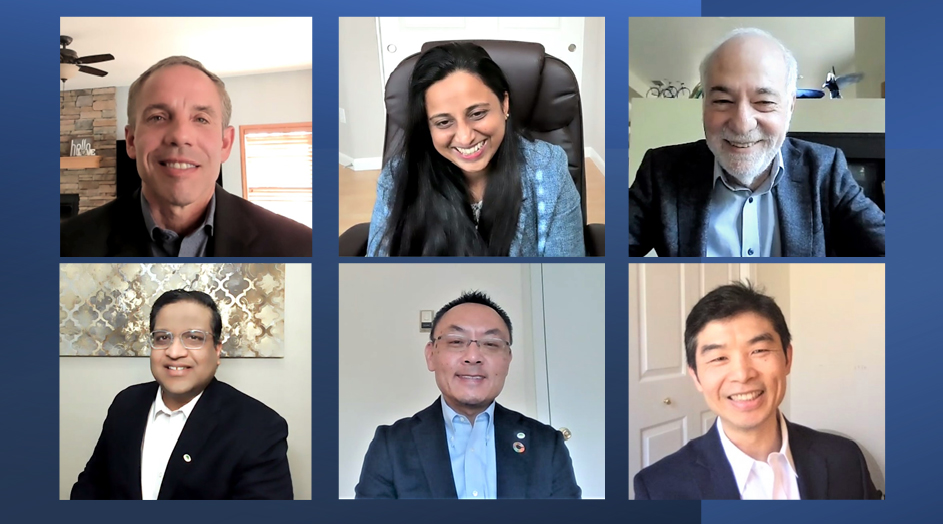
Ravi
Yushi, suppose we were to take a systematic approach and leverage Hitachi’s existing technology solutions. How should we leverage Hitachi’s portfolio, and what should the execution strategy be?
Yushi
Business planning and sustainability strategy should go hand in hand. Always having a longer-term vision and engaging with customers through Hitachi's co-creation approach is how we identify what technologies are relevant and need to be incorporated into the larger technology mesh.
Companies similar to Hitachi are on the right path in partnering with other companies to understand industrial issues and the way technology is really being used. These activities need to tie into the right monetization models because unless we tag the concept of monetization onto our hypotheses, it becomes difficult to sustain as a business. Therefore, realizing the appropriate areas to invest in and having active dialogue among the right stakeholders is what we must focus on.
Active engagement and dialogue are important not just with the customer but also with our internal business units. We are learning that there are many common methodologies that can be shared, and those learnings should be consolidated into a common knowledge platform. In this way, we can identify effective solutions that have value across all the industries where we have presence.
Ravi
Jian, auto technology has taken center stage at CES 2021. What does it offer the public transit system? How can it be leveraged to establish a multimodal ecosystem?
Jian
Automation is one way to generate more productivity for the whole society. Autonomous vehicles have experienced acceleration during COVID-19. With more deliveries, a lot of last-mile solutions are with autonomous vehicles. Automation also has enabled more fixed-route automated bus systems in many parts of the world.
Hitachi is analyzing what this means. With different traffic patterns, we see different networks. And automation is creating opportunities to improve customer experience, like reducing the waiting time and making trips more predictable from the start to the end of journeys. Those are general trends that will guide us, and Hitachi has the technology to contribute to such work.
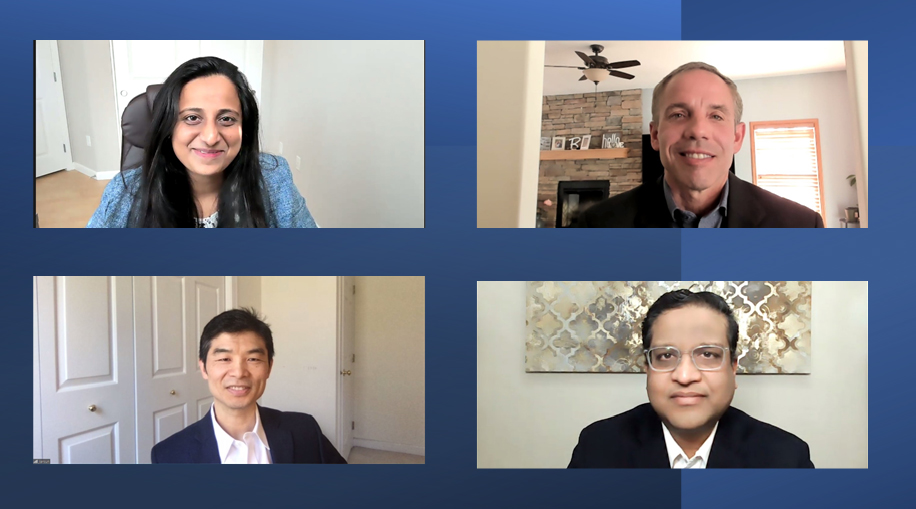
Malar
New infrastructure and digital solutions in the transportation sector have allowed companies to develop innovative business models and collaborative systems. Dean and Yushi, how should multimodal solutions be conceived within Hitachi and delivered?
Yushi
The key is for ecosystem stakeholders to work together to create a universal platform. We then come up with very quick, agile applications on top of that platform that address the issues we're trying to resolve. Working together to build an open universal platform for these apps to thrive on but focusing on individual use cases and co-innovating at a very rapid pace, is the push we're seeing.
Dean
Yushi, that was spot on. At Hitachi, with some 870 business units spanning the globe, it's sometimes hard to be nimble, but in this case, you must be nimble and have the courage to innovate. So, you go to the customer and ask what their issues are. You must understand what the problem is and make sure you're answering the question that's being asked. Then you must be able to co-create with other innovators in very quick, nimble ways to come up with a minimum viable solution that you take to market and see whether it solves the problem. If it works, you roll it out and learn how to leverage and scale.
Malar
Jian, would you add how it fits on the Hitachi Rail roadmap?
Jian
Hitachi Rail collaborates with other business units. We try to merge our stream with other research and development and innovation activities. There is a big endeavor into smart cities, and we have a vision of what a smart city looks like. It should be based on smart transportation. Transportation is not necessarily something on wheels. It could be walkable spaces, somewhere people feel safe and comfortable getting from place to place. So, we are joining the bigger conversation with the US Department of Transportation and local economic development agencies about transit-oriented development.
We are looking into the operating system for their transit system and also for the city system, so how to manage a city. That's what we are trying to implement and build our solution around. Of course, this cannot be done by Hitachi alone. Because it is a cooperative effort, we must work with other players and develop a platform that benefits everybody.
Malar
Yushi, what is Hitachi’s specific focus this year and the coming years?
Yushi
We're in the final year of our 2021 Mid-term Management Plan, which has focused on achieving growth through digital technologies, contributing to the environment through business and future capital allocation. We're starting to plan for the next 2024 Mid-term Management Plan, which will focus on how we come out of COVID-19, as a stronger organization, and several key business domains.
Automation is one of those businesses. Others involve areas that enhance resilience and sustainability to ensure that our systems, structures and organizations are more capable of overcoming the world’s complex challenges. And last but not least is safety and security. In the United States, we’ve been driving a wide range of business domains, but one key theme is how we create exponential growth in the market of mobility and multimodality.
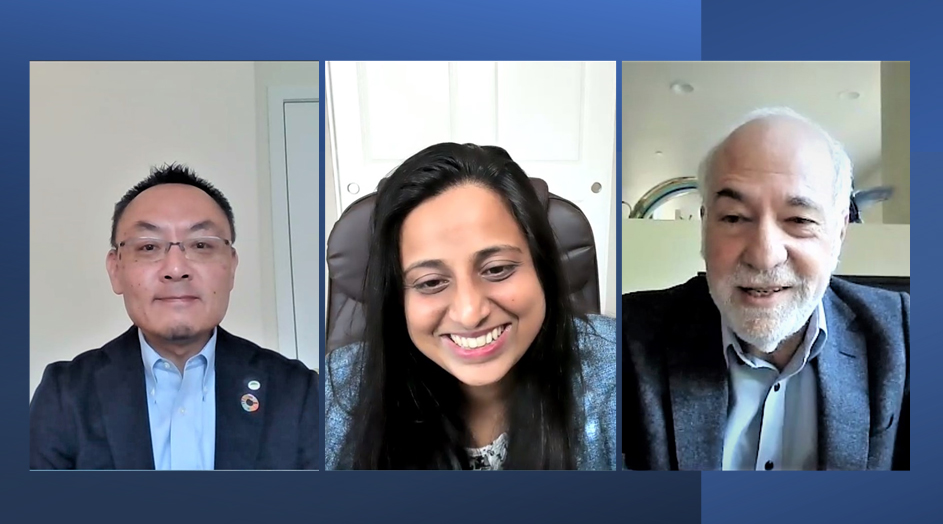
While many challenges remain, multimodal mobility promises greater energy efficiencies and convenience for passengers. Hitachi is committed to powering good through Social Innovation Business. In this article, we covered the future of mobility, policy approaches in multimodality, and Hitachi's approach in this domain.
Read other articles in the Insights from AI/Analytics series on the Hitachi Research & Development website.
(As at the time of publication)
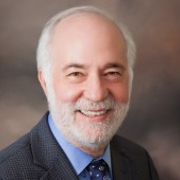
Daniel (Dan) SPERLING, Ph.D.
Civil Engineering and Environmental Science and Policy
University of California, Davis
Dr. Daniel Sperling is Professor of Civil Engineering and Environmental Science and Policy and founding Director of the Institute of Transportation Studies at the University of California, Davis (ITS-Davis). He was also appointed to the transportation seat on the California Air Resources Board and served as the Chair of the Transportation Research Board (TRB) of the National Academies in 2015-16.
Dan is recognized as a leading international expert on transportation technology assessment, energy and environmental aspects of transportation, and transportation policy. His research is directed at accelerating the global transition to cleaner, more efficient transportation and energy, and mitigating climate change. His work has been recognized through numerous awards including the 2018 Roy W. Crum award from TRB, its highest research award; and the 2013 Blue Planet Prize from the Asahi Glass Foundation Prize for being "a pioneer in opening up new fields of study to create more efficient, low-carbon, and environmentally beneficial transportation systems." He has given over 500 presentations, including keynote presentations and talks at international conferences worldwide.
Dan is the author or co-author of over 250 technical papers and 13 books, including Three Revolutions: Steering Automated, Shared, and Electric Vehicles to a Better Future (Island Press, 2018). He is a regular contributor to Forbes and Energy Expert contributor for Wall Street Journal, is widely cited in leading newspapers, and been interviewed many times on NPR radio, including Science Friday, Talk of the Nation, Marketplace, and Fresh Air.

Dean BUSHEY, Ph.D.
Vice President, Global Social Innovation Business (GSIB) - Americas,
Hitachi, Ltd.
Dean is the Vice President, Hitachi’s Social Innovation Business (GSIB), Americas. He has over 30 years of business, academic, and military leadership experience in transportation and mobility, as a computer scientist, educator, commercial pilot, and autonomous and connected systems expert. In his current role he leads and directs the GSIB America's team in commercial development and business strategy across multiple verticals, emphasizing advanced digital solutions and data analytics.
He is an internationally recognized expert in autonomous, connected, electric, and shared transportation systems across air, rail, freight, trucking, and shared system modalities. Before joining Hitachi America, Ltd., he was the General Manager of Voyage, a self-driving car startup, with a mission to super-charge communities with self-driving cars. He helped lead the operational deployment of self-driving vehicle technology in The Villages, FL.
He retired from the U.S. Air Force, after 25 years of service, as a full Colonel. Dean also hold a Master’s degree and a Ph.D. in Computer Science from Clemson University.

Jian SUN, Ph.D.
Principal Product Solution Manager
Hitachi Rail STS Inc., Americas
Jian joined Hitachi Rail STS in 2006 to lead product development of Communications Based Train Control (CBTC). Later on, he took positions as systems engineer and project engineer, leading multiple teams to design, configure, and test complete signaling systems.
Since 2017, Jian has been working for Sales and Business Development to promote new technologies and develop technical solutions for upcoming business opportunities. His main focus is in railroad digitization to augment signaling systems, enhance operations, and improve passenger experience.

Yushi AKIYAMA
Vice President, Corporate Strategy and Business Development
Hitachi America, Ltd.
Yushi Akiyama is vice president of corporate strategy and business development at Hitachi America, Ltd., where he facilitates the development of Hitachi’s Social Innovation Business in North America through close collaboration among Hitachi’s 80 plus business operations in the region. He is also responsible for overseeing branding, corporate communications and sustainability activities in his capacity.
Yushi has 25 years of working in many positions within the Hitachi organization, including global sales & marketing for railway systems, government relations in Washington D.C. and Brussels, and corporate sustainability activities.
Yushi is a native of Japan, but has spent most of his life in the United States, both as a child growing up in Southern California, and through separate overseas assignments in New York and Washington D.C.

Ravigopal (Ravi) VENNELAKANTI
Chief Innovation Strategist,
Vice President & Head of the Big Data Analytics Solutions Laboratory, R&D Division,
Hitachi America, Ltd.
Ravi joined Hitachi America R&D in 2013 and has over 25 years of research and innovation experience in accelerating technologies from lab to market.
At Hitachi America R&D, he leads the research on multi-modal mobility. He specializes in transformation solutions research leveraging AI and analytics, data management, IoT, and blockchain, addressing the complete value chain of the mobility industry's domain.
Before joining Hitachi America R&D, Ravi served as Distinguished Technologist, Chief Technologist, and Enterprise Architect in Fortune 100 companies and startup companies.

Malarvizhi (Malar) SANKARANARAYANASAMY, Ph.D.
Researcher, Big Data Analytics Solutions Laboratory, R&D Division,
Hitachi America, Ltd.
Malar joined Hitachi America R&D after completing her Ph.D. in Mechanical Engineering. She has over six years of engineering and research experience effectively leading and managing research projects from conception to completion. She has worked with small and medium enterprises to help them actively incubate & build their capabilities to adopt new science and technological developments on a production scale.
Malar was one of 5 recipients of the National University of Singapore (NUS) India Research Initiative (IRI) Scholarship and also received the NUS Ring-fenced Industry Research Scholarship. Her areas of interest are multimodal mobility, risk & uncertainty analysis, technology policy, blockchain, and their applications for transits systems.